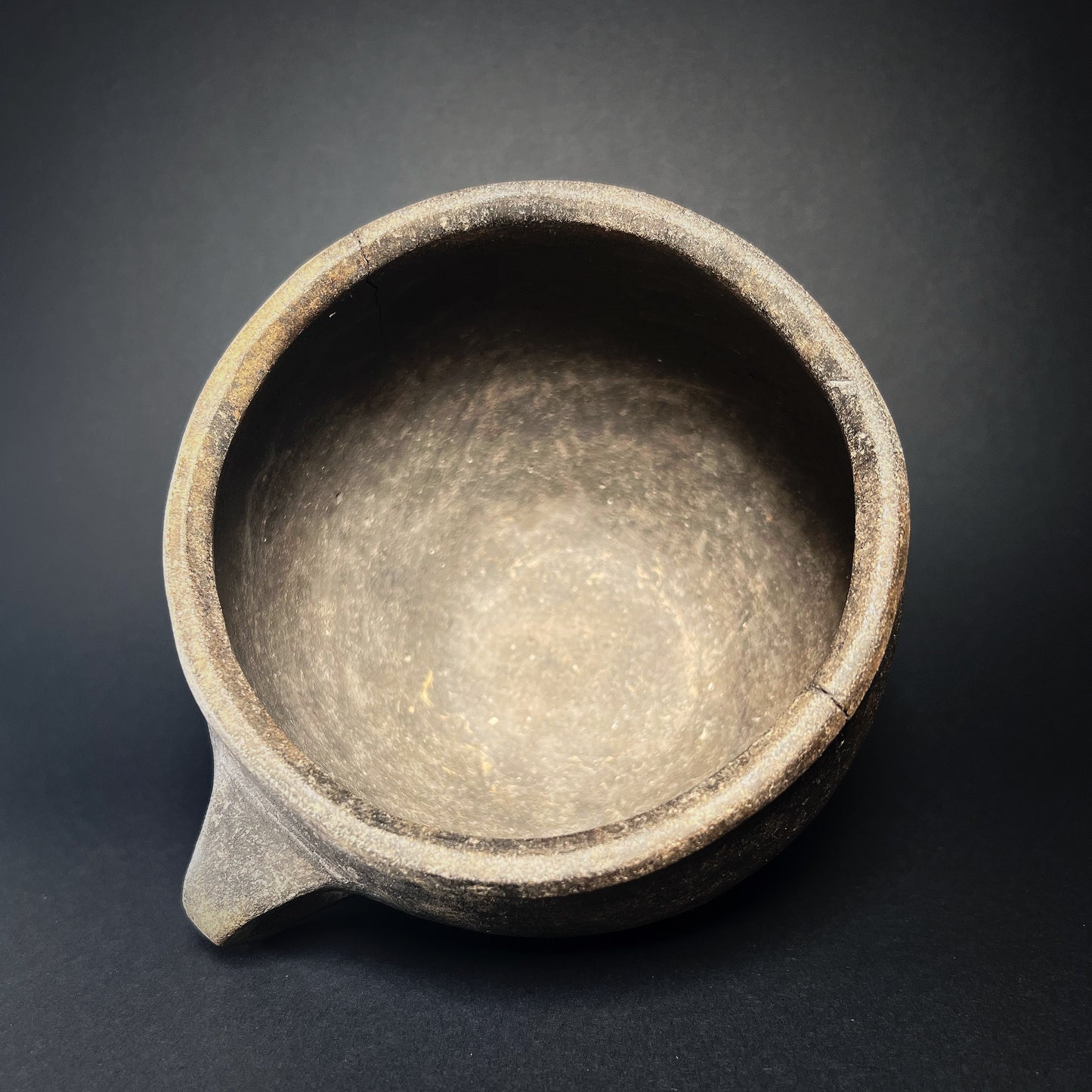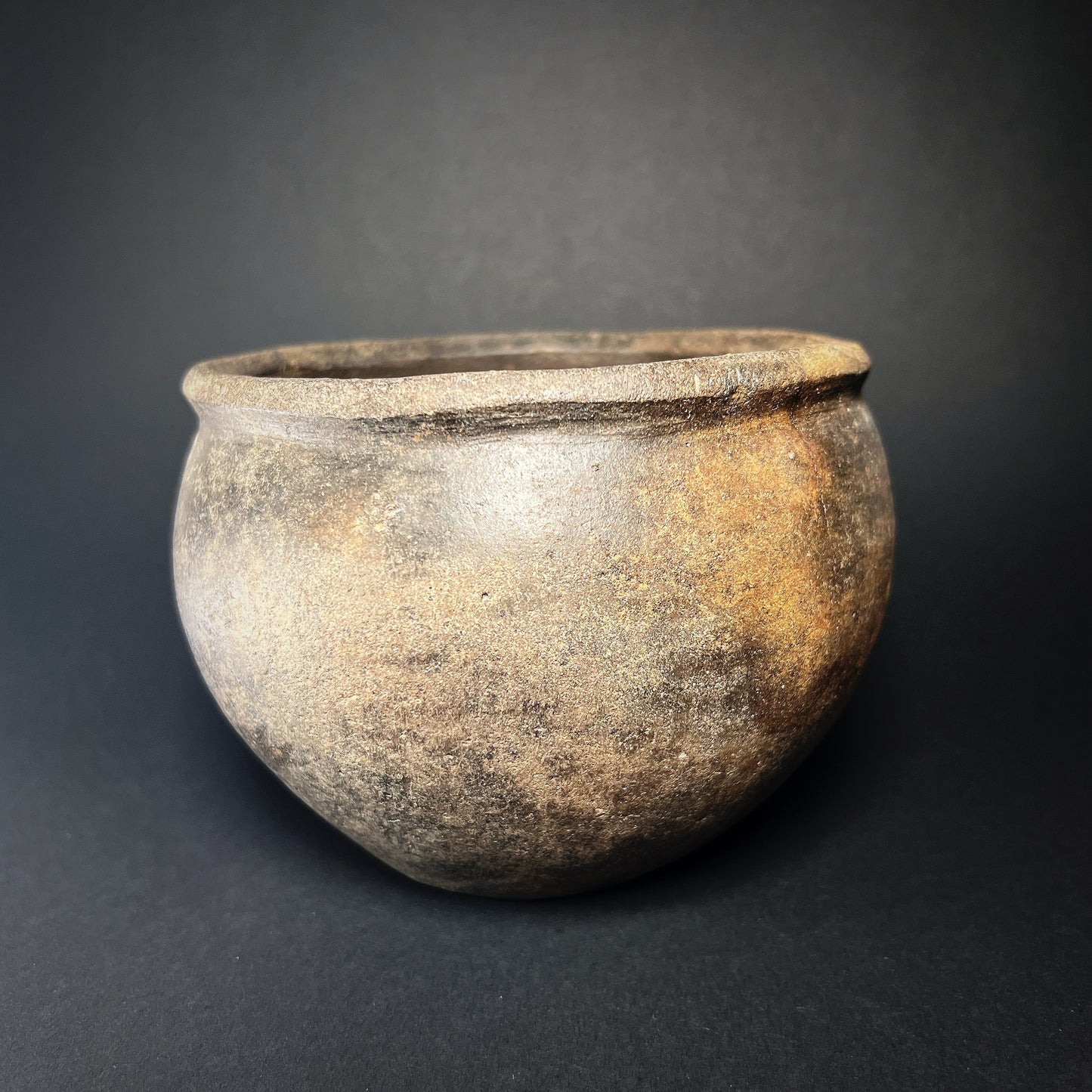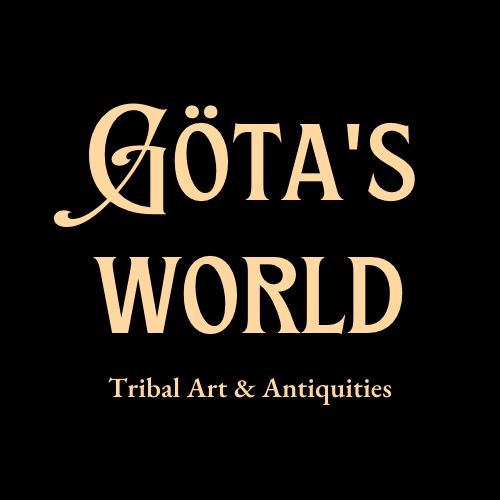Danish Late Mesolithic or Early Neolithic Period Earthenware Vessel
Danish Late Mesolithic or Early Neolithic Period Earthenware Vessel
Couldn't load pickup availability
Ertebølle Culture, c. 5400–3950 BC or Funnelbeaker Culture, c. 4100–2800 BC, Denmark
A magnificent and extremely rare earthenware vessel from the late Mesolithic or early Neolithic period, this piece is a remarkable bog-found artifact from Denmark. The squat, round-bodied jar features a slightly corseted neck, an elegantly flanged outward-turning rim, and a single strap handle placed low on the body—typical of early ceramic forms in prehistoric Northern Europe.
This vessel may be attributed to the Ertebølle culture (c. 5400–3950 BC), a Mesolithic society that flourished in northern Jutland and along the Danish coasts. The Ertebølle people were semi-sedentary hunter-gatherers, thriving near fjords, rivers, and bays. Renowned for their rich kitchen middens—massive shell heaps composed primarily of oyster shells—they left behind one of the most visible legacies of early human settlement in Scandinavia. Their pottery, typically hand-built by coiling and tempered with sand, crushed stone, and organic material, included simple beakers and lamps, often fired in open hearths or bonfire kilns.
Flint tools from the period reached a high degree of refinement, and the Ertebølle people also made use of wood, antler, and bone for various implements. Their burial customs were equally distinctive, often involving cremation and the ritual placement of grave goods.
Alternatively, this vessel could originate from the Funnelbeaker culture (c. 4100–2800 BC), which succeeded the Ertebølle and marks the dawn of the Neolithic in Denmark. This period introduced agriculture and animal husbandry, while older Mesolithic practices such as hunting and shell-gathering continued in parallel. Funnelbeaker pottery shows a clear leap forward in craftsmanship—vessels were thinner, more sophisticated in form, and richly decorated through stamping, modeling, and incising.
People of the Funnelbeaker culture lived in longhouses, raised pigs, cattle, and sheep, and cultivated grains such as einkorn and barley. They are also known for their monumental megalithic tombs, including dolmens and passage graves, which testify to a growing complexity in ritual and social organization.
This beautifully preserved vessel is a rare and evocative survivor from the dawn of ceramic tradition in Northern Europe—an artifact that bridges the worlds of hunter-gatherers and early farmers.
Excellent condition. Intact. Surface wear and abrasions commensurate with age, nicks and chip, with encrusted patina and rich earthen deposits throughout. Size approx. 16,0cm x 13,0cm x 9,7cm.
Provenance: Ex-museum collection from Denmark
References and further reading:
Europe's First Farmers – T. Douglas Price, University of Wisconsin, Madison, Cambridge University Press, 2000 (http://assets.cambridge.org/97805216/62031/ sample/9780521662031ws.pdf)
Inland Ertebølle Culture: the importance of aquatic resources and the freshwater reservoir effect in radiocarbon dates from pottery food crusts, Bente Philippsen & John Meadows, Internet Archaeology (doi:10.11141/ia.37.9)
The introduction of ceramics in the Ertebølle Culture, Karen Poulsen, Danish Journal of Archaeology, 2013 2, 146–163. (https://doi.org/10.1080/21662282.2013.904127)
Organic residue analysis of Early Neolithic ‘bog pots’ from Denmark demonstrates the processing of wild and domestic foodstuffs, Harry K. Robson, Hayley Saul, Valerie J. Steele, John Meadows, Poul Otto Nielsen, Anders Fischer, Carl P. Heron & Oliver E. Craig, Journal of Archaeological Science: Reports, Volume 36, 2021. (https://doi.org/10.1016/j.jasrep.2021.102829.)





-
Shipping
The shipment will be prepared in the course of 3-5 days and dispatched via Posti Group Oyj or purchased item(s) can be picked up from our shop during the store's opening hours (Tarkk’ampujankatu 4, 00140, Helsinki, Finland). Within the Finland, all items are shipped via Posti Group Oyj unless otherwise requested. We pack the items carefully and mainly in recycled materials because we want to save nature. You will receive the tracking number for your items by e-mail.
-
Returns
Returns and exchange will be accepted within fourteen days (14) of receipt at the purchaser’s cost to include freight and packaging. Items must be returned in the same condition as when they were shipped, and will not be accepted if damaged or altered in any way. Please inform us via email (info@gotanmaailma.fi) or by calling +358408408352 before sending. We do not accept returns more than 14 days after delivery.





